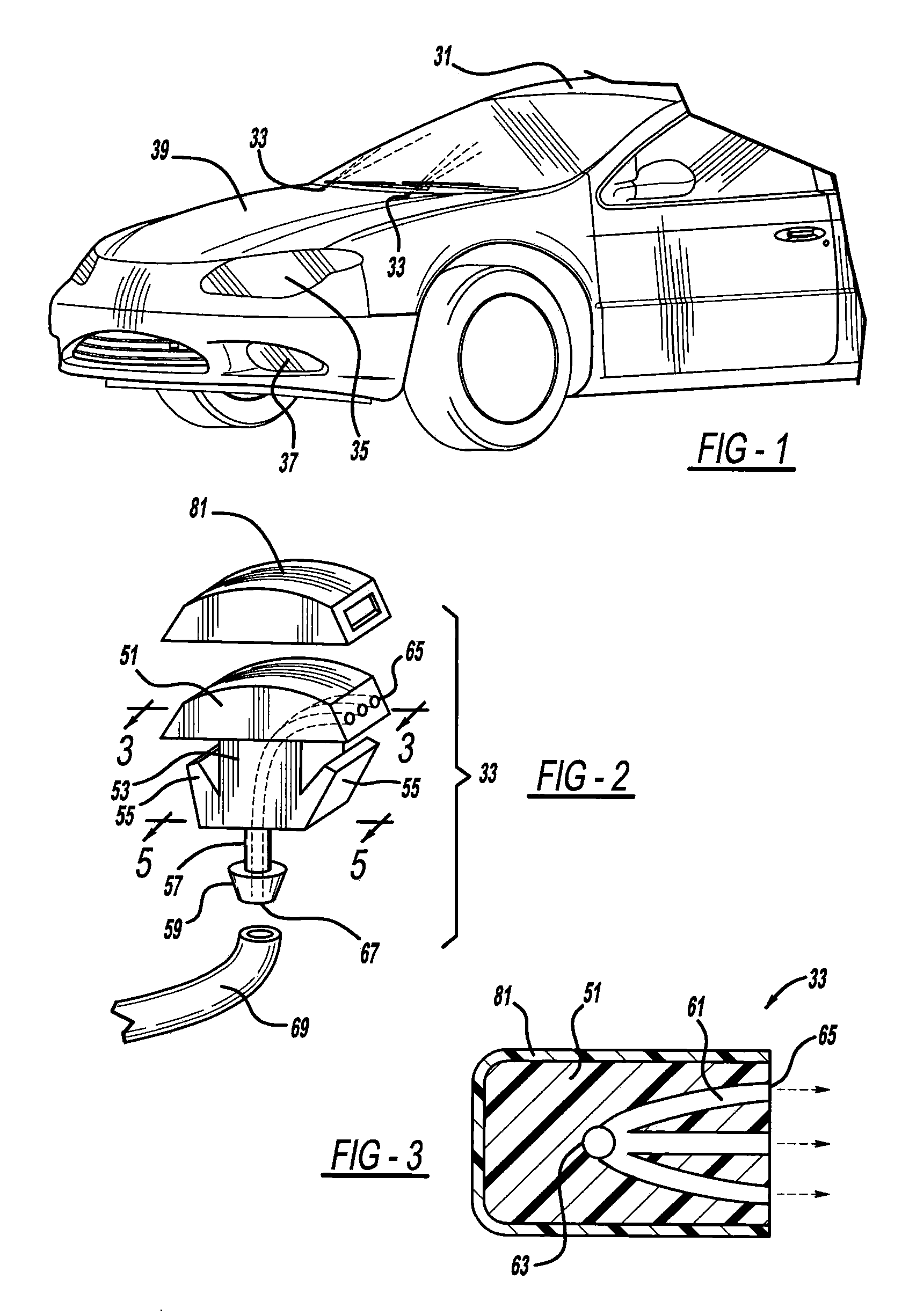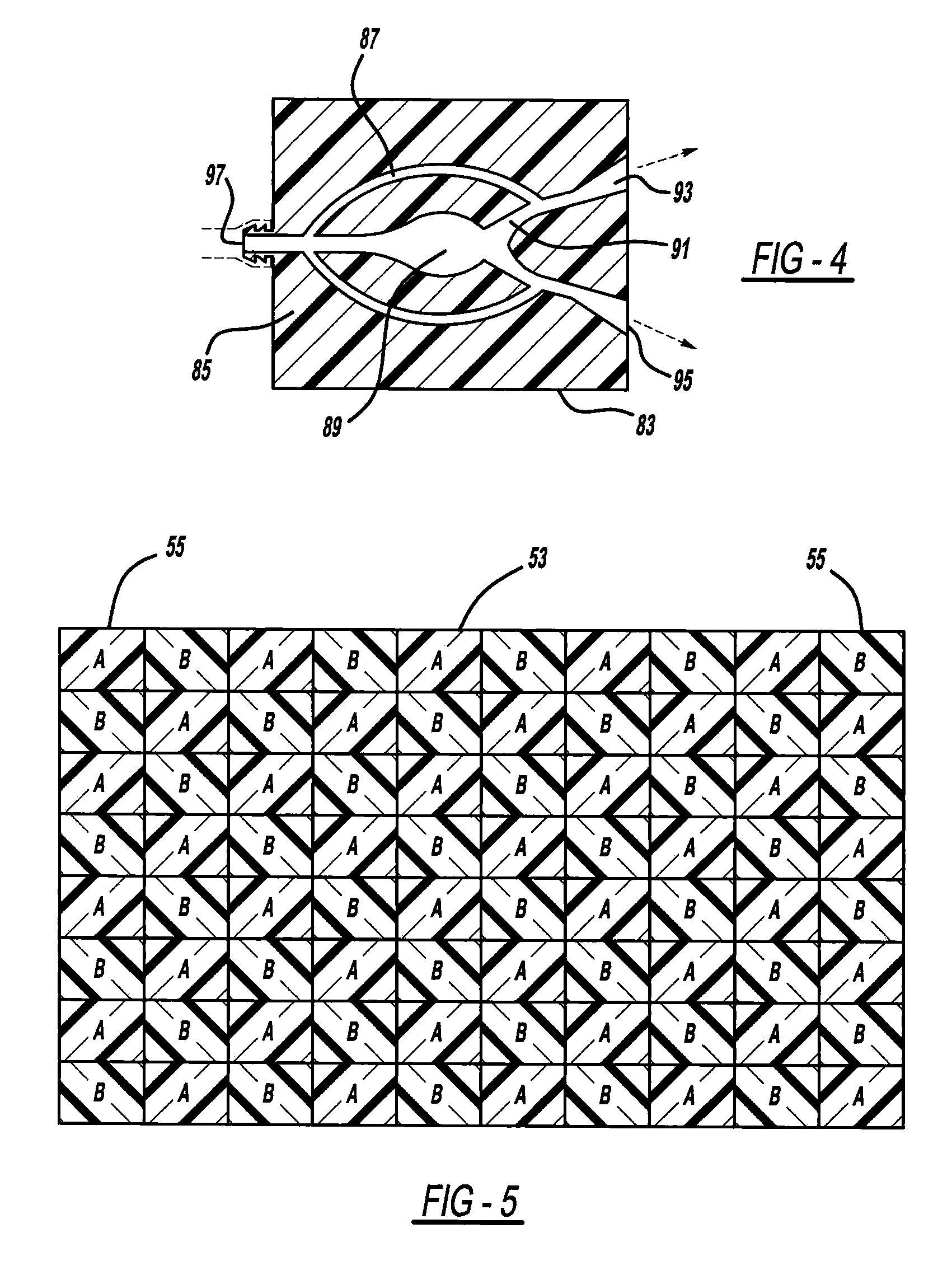Component with a passageway made by three-dimensional printing
- Summary
- Abstract
- Description
- Claims
- Application Information
AI Technical Summary
Benefits of technology
Problems solved by technology
Method used
Image
Examples
Embodiment Construction
[0018]FIG. 1 illustrates an automotive vehicle 31 including various three-dimensionally printed components, including window washer jets 33 and lamps 35 and 37. Washer jets 33 are fastened to a vehicular body panel such as a hood 39 for a windshield use, or a roof or lift gate panel for a back window use. Exterior lamp 35 is mounted to an upper radiator support panel or front fender panel when acting as a head lamp, alternately to a tail panel or rear fender panel when acting as a tail lamp, and to a trunk lid or roof if acting as a center high mount stop lamp. The lamp may alternately serve as a fog or running lamp 37.
[0019]Referring to FIGS. 2 and 3, each washer jet 33 includes a laterally enlarged head 51, a body 53 longitudinally extending to a bottom of head 51, and a pair of wings 55 which are flexibly attached to lateral sides of body 53. Additionally, a rigid conduit 57 protrudes in a longitudinal direction from a distal end of body 53 with a generally frusto-conically shape...
PUM
| Property | Measurement | Unit |
|---|---|---|
| Force | aaaaa | aaaaa |
| Flow rate | aaaaa | aaaaa |
| Flexibility | aaaaa | aaaaa |
Abstract
Description
Claims
Application Information
 Login to View More
Login to View More - R&D
- Intellectual Property
- Life Sciences
- Materials
- Tech Scout
- Unparalleled Data Quality
- Higher Quality Content
- 60% Fewer Hallucinations
Browse by: Latest US Patents, China's latest patents, Technical Efficacy Thesaurus, Application Domain, Technology Topic, Popular Technical Reports.
© 2025 PatSnap. All rights reserved.Legal|Privacy policy|Modern Slavery Act Transparency Statement|Sitemap|About US| Contact US: help@patsnap.com



